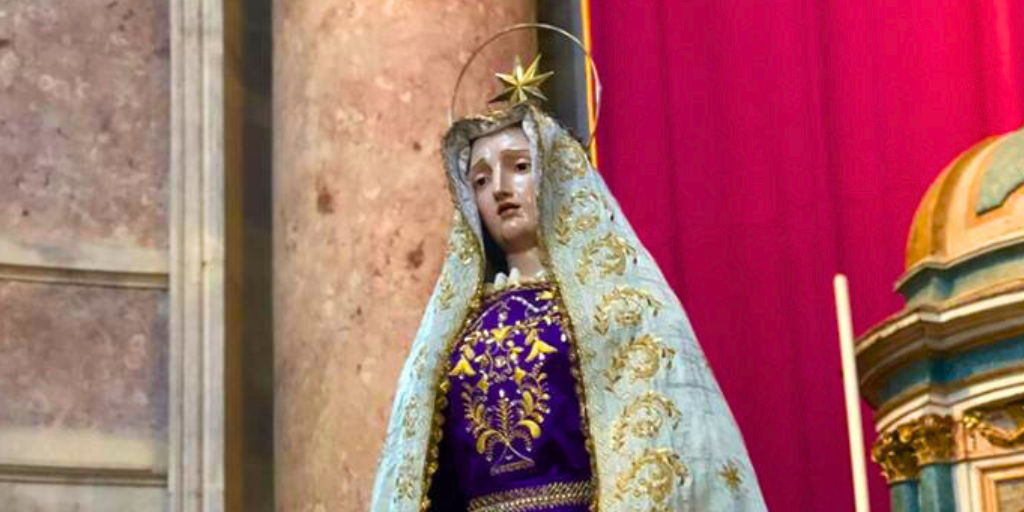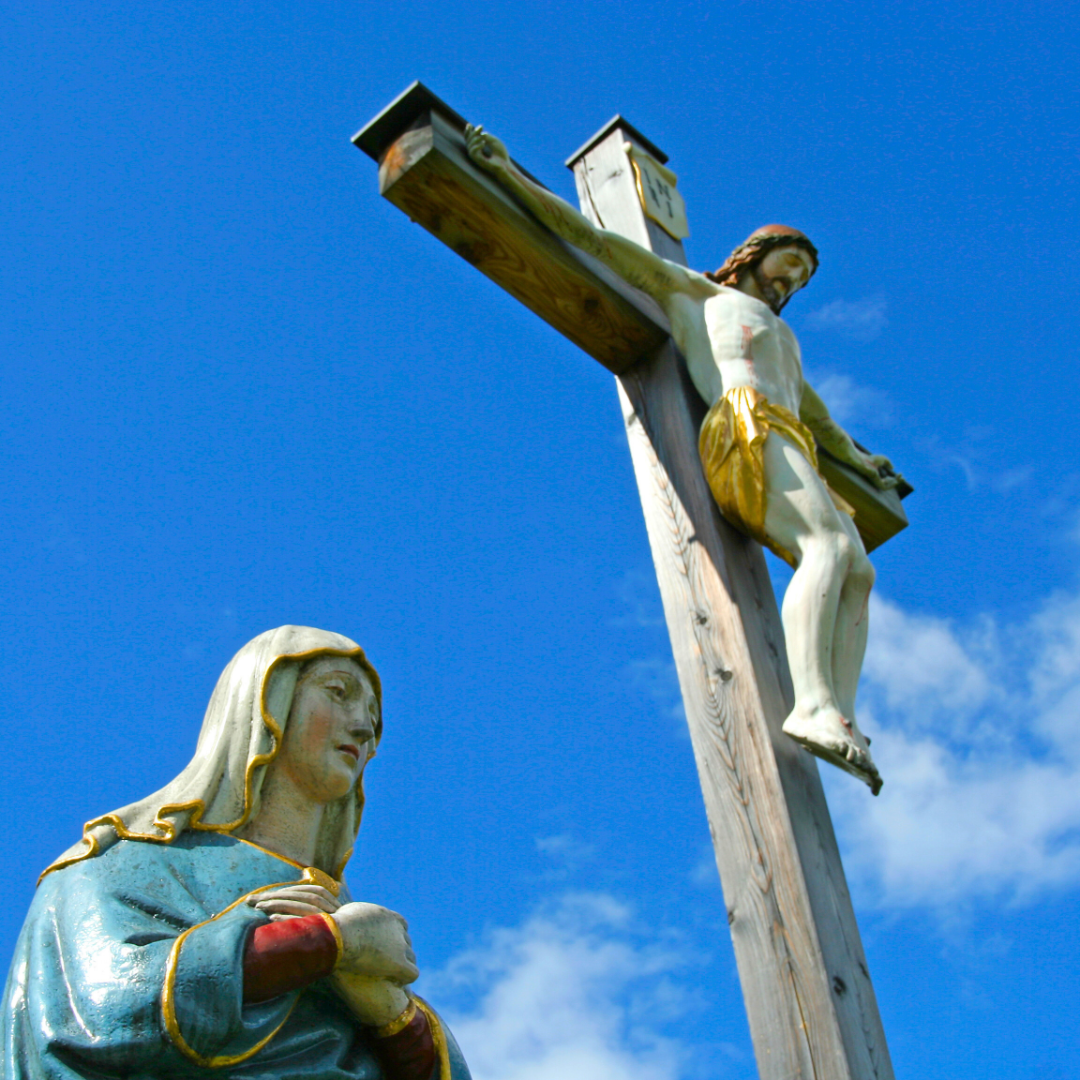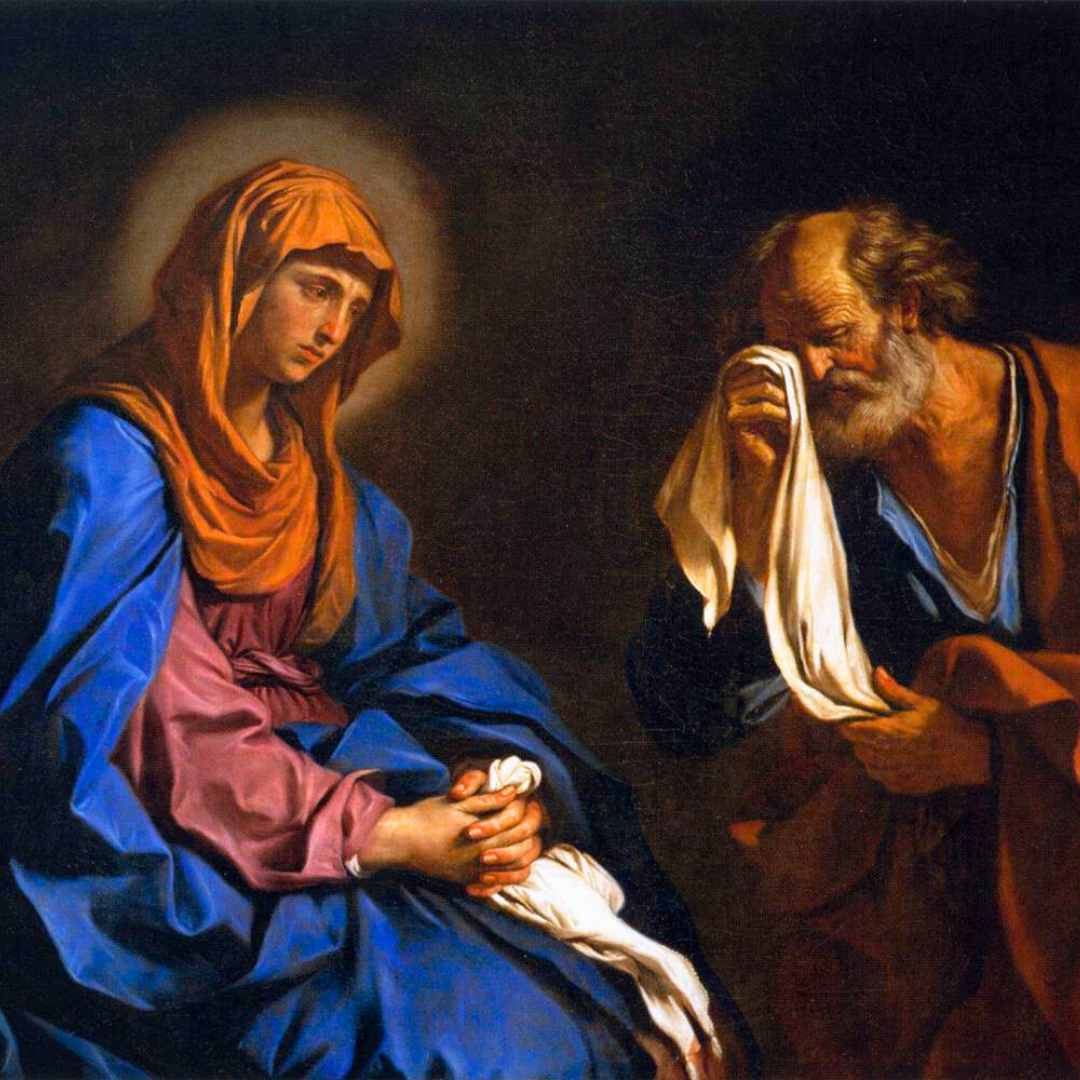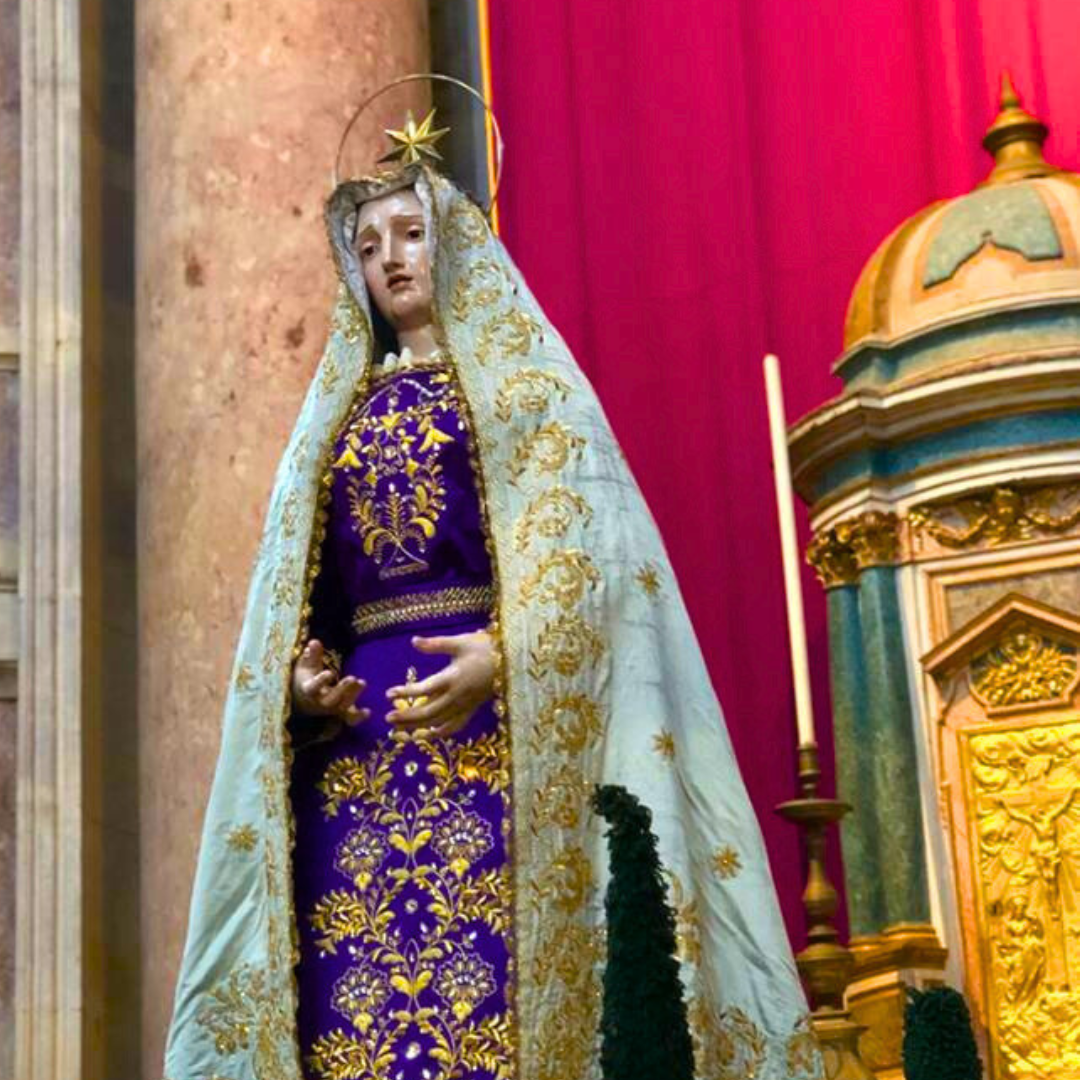
Rebecca W. Martin introduces a Spanish devotion to Our Lady, whose patient, silent waiting on Holy Saturday is the origin of the Church's dedication of Saturdays to Mary.
Do you have a hope, a dream, a prayer that never seems to come, no matter how hard you strive and ask? Perhaps you want to draw or create art, but the needs of your children come first. Perhaps a dear one has left the faith, and you weep with St. Monica for their return. Or perhaps you long for children, or for freedom from an illness, or one of the many other burdens of the human heart.
May I suggest that, like me, you develop a devotion to Our Lady of Holy Saturday?
Good Friday is all about suffering and sorrow—Jesus’ Passion, first and foremost, but also the intense suffering of Mary, John, and Mary Magdalene, who stood at the foot of His Cross, and also of the apostles who could not even bear to watch. Whenever we experience anguish, we are offered the opportunity to stand at the foot of the Cross alongside the Blessed Mother under her title of Our Lady of Sorrows.

Holy Saturday is a different story. The chaos of the earthquake and the screams of the dying thieves and the gushing blood and water of Jesus’ side have settled; the Sabbath brings stillness to Jerusalem. The apostles stumble through a fog of grief and fear, unable to imagine their beloved master ever returning to them.
Mary, however, just waits.

In the words of Dom Prosper Gueranger:
Mary alone lives in expectation of His triumph. In her was verified that expression of the Holy Ghost, where, speaking of the Valiant Woman, He says: “Her lamp will not be put out in the night” (Proverbs 31:18) Her courage fails not because she knows that the sepulchre must yield up its Dead, and her Jesus will rise again to life. Saint Paul tells us that our religion is vain unless we have faith in the mystery of our Saviour’s Resurrection — where was this faith on the day after our Lord’s death? In one heart only, and that was Mary’s. As it was her chaste womb that had held within it Him whom heaven and earth cannot contain, so on this day, by her firm and unwavering faith, she resumes within her single self the whole Church. (The Liturgical Year, vol. 6: Passiontide and Holy Week)
She trusts that the dawn of the Resurrection will come, even as her heart breaks at this separation from her beloved Son. She does not know how or when he will return from the dead, so she waits. And in that silent waiting, Our Lady of Holy Saturday—who is known in Spanish as La Virgen de la Soledad, Our Lady of Solitude—invites us to give her every good thing we are waiting for.
The image of Maria de la Soledad is a sixteenth-century Spanish statue, a copy of an image from Queen Juana of Castile, as she mourned the death of her husband, Philip I. She is dressed in the clothing of a widow at that time—a heavy black gown, relieved only by a white lace wimple framing her face. And her expression is one of sorrow, for she is still Our Lady of Sorrows. But this is a quiet sorrow, a sorrow full of faith.

She holds out her hands, ready to receive your hopes and the deepest desires of your heart. By giving them to her, you are not losing them or pushing them aside forever. You are letting her do the waiting for you, so that you can rest in her Son’s peace instead of being trapped by despair.
She will weep over your broken heart. She will cradle those precious desires that God placed within you. She will hold the time and talents you fear wasting. She will even hold your biological clock for you.
So go to the Blessed Mother in her little house where she waits for the Resurrection. Let her lead you out of Good Friday, out of the anguish, and into the quiet trust of Holy Saturday.
Our Lady of Holy Saturday, Our Lady of Solitude, La Virgen de la Soledad, pray for us.
P.S. If you want a specific prayer to pray to Our Lady of Holy Saturday, the Servite devotion of the Desolata is a beautiful one.
Share your thoughts with the Catholic Mom community! You'll find the comment box below the author's bio and list of recommended articles.
Copyright 2024 Rebecca W. Martin
Images: Wikiart; Wikimedia Commons; Canva
About the Author

Rebecca W. Martin
Rebecca W. Martin, a trade book Acquisitions Editor for Our Sunday Visitor and Assistant Editor at Chrism Press, lives in Michigan with her husband and too many cats. A perpetually professed Lay Dominican, Rebecca serves as editor for Veritas, a quarterly Lay Dominican publication. Her children’s book Meet Sister Mary Margaret will release in fall 2023 from OSV Kids.


.png?width=1806&height=731&name=CatholicMom_hcfm_logo1_pos_871c_2728c%20(002).png)
Comments